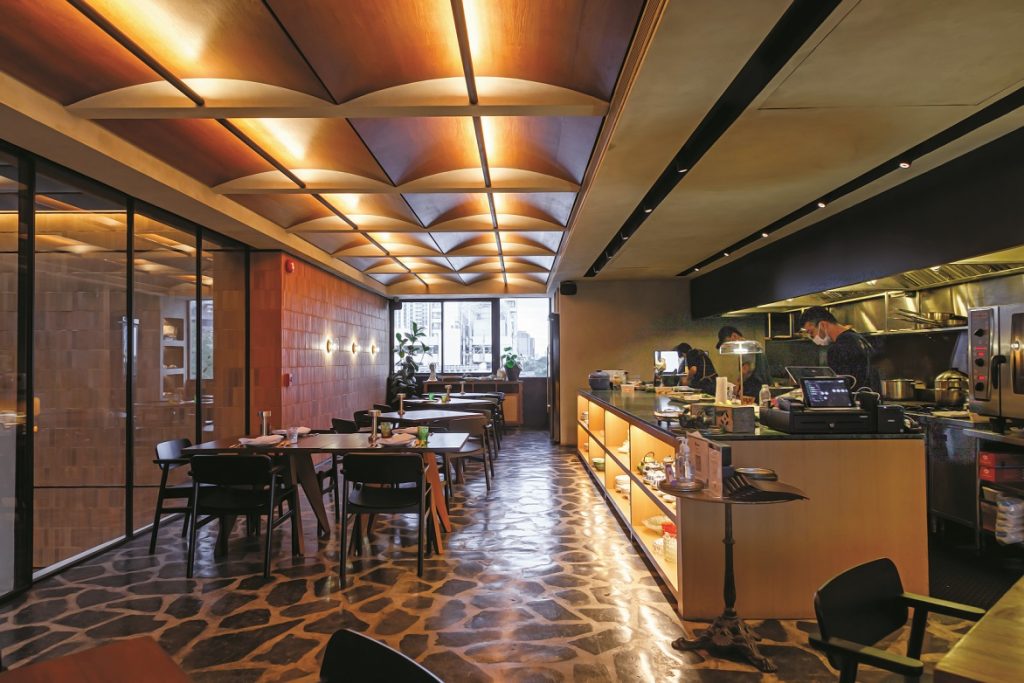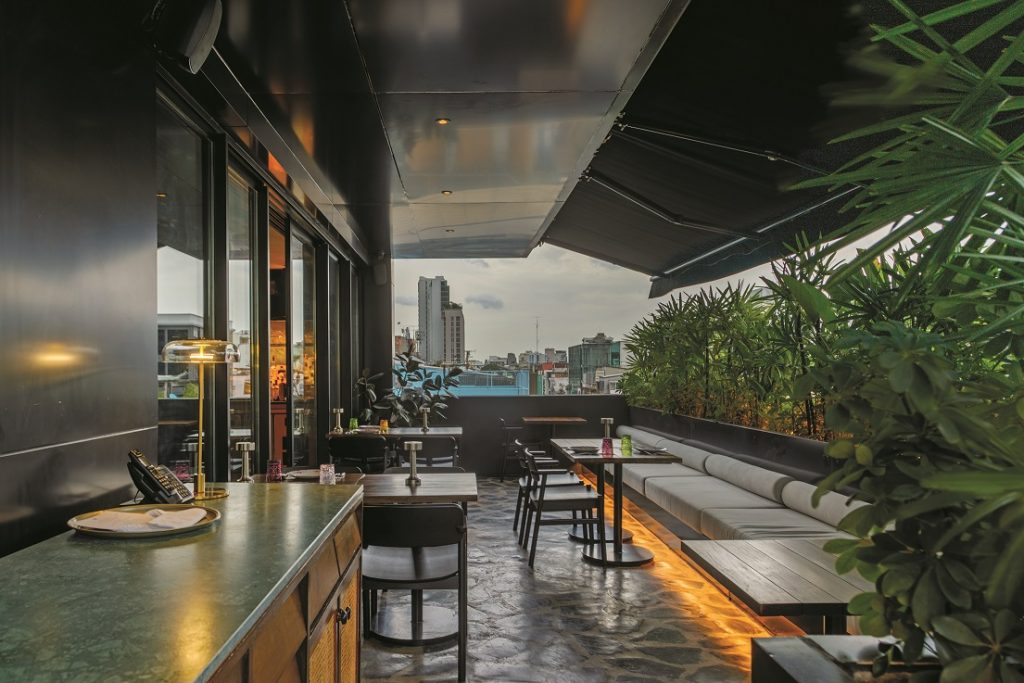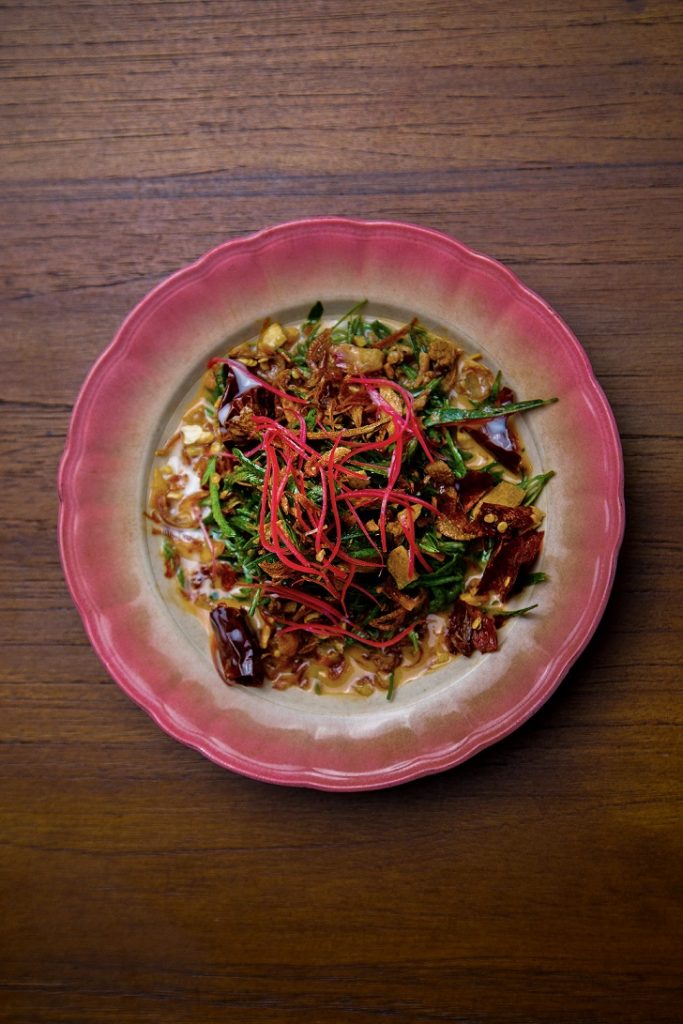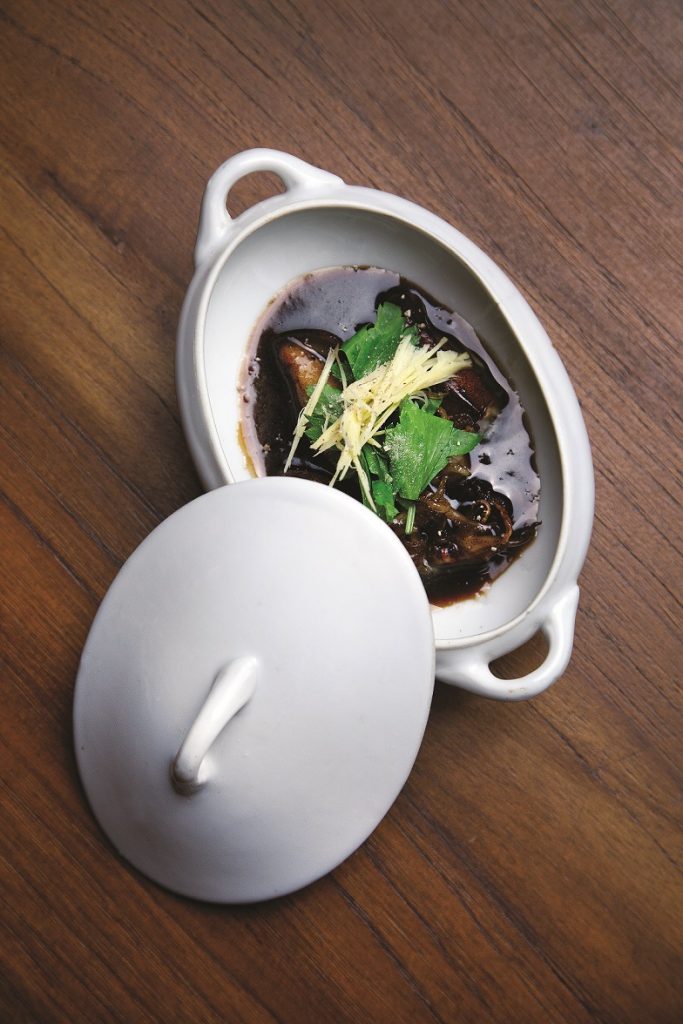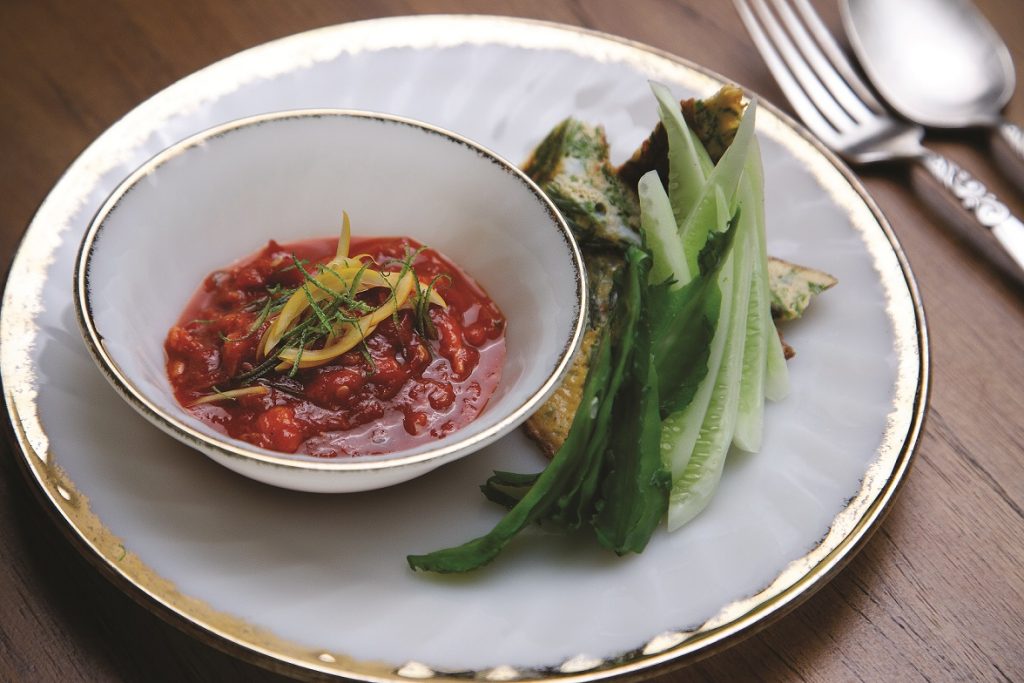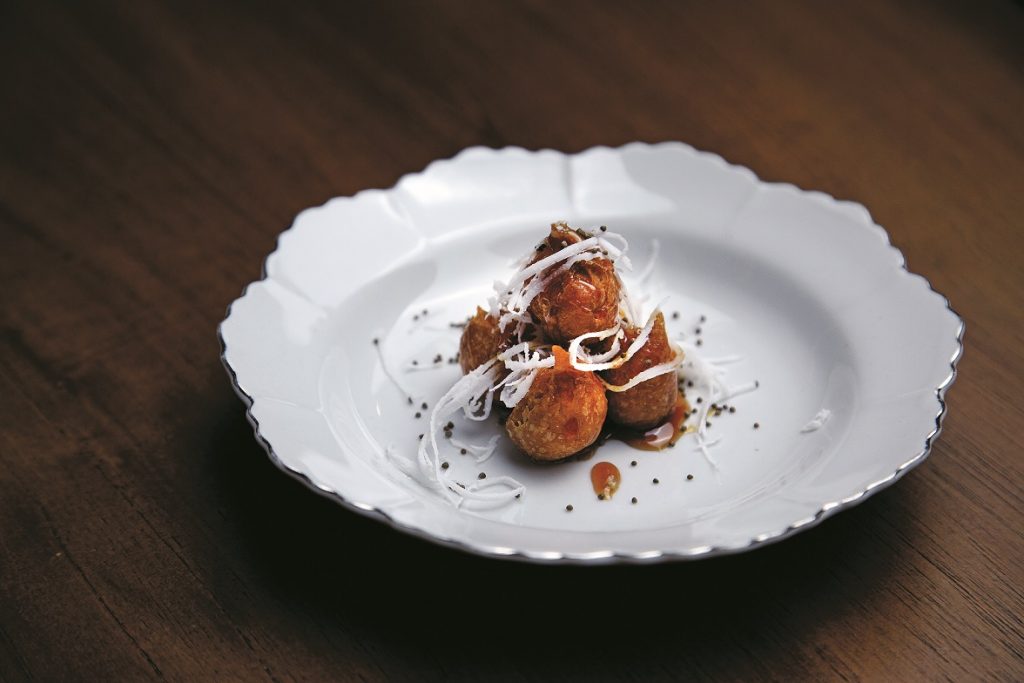Discover how the restaurant pays homage to the Kingdom’s rich cultural heritage.
By Ashima Sethi
One cannot say they are familiar with the country’s culinary landscape without thinking about Chef David Thompson, the gastronome behind Michelin-starred nahm, which has remained one the Kingdom’s most celebrated restaurants since its launch in 2010. Not one to sit in one place for too long, Chef Thompson has since expanded his portfolio with the launch of Aksorn, a restaurant that serves to celebrate lost recipes that were once passed down from generation to generation, and rare dishes that the modern diner deserves to enjoy.
Recently awarded one Michelin star, Aksorn is located on the fifth floor of Central: The Original Store, a location that bears significance as this was the Central family’s first outlet, which was first opened as a bookstore in the 1950s. This ties into what forms the foundation of Aksorn’s menus, as the dishes being revived are from a large collection of cookbooks that were published in the 1950s to 1970s.
Beyond just the recipes themselves, Chef Thompson has enlisted the support of legendary food columnist, cookbook author, and presenter Khun Nutchanand (Pao) Osathanond, whose fond memories of cooking stretch back to her childhood after World War II when she was a little girl who found joy being in the kitchen. Over time, Khun Pao and her mum recorded many of her family’s recipes, and these unpublished secrets have now been shared with Chef Thompson’s team to formulate the unique dishes presented at Aksorn.
Leading the kitchen is Head Chef Pae Patipan who Chef Thompson describes as ‘one to watch.’ When asked about what makes Aksorn stand out in comparison to other upscale Thai restaurants, he says, “I would say it’s the most elegant Thai food available. It’s very authentic, there’s a very special atmosphere here that will transport you to another time. It’s very different from any other place in the city.”
Before settling down for dinner, I ask Chef Thompson what he believes is behind Aksorn’s success, to which he replies with, “We’re just a bunch of outrageous flirts! [laughs].” A claim that most definitely had me looking forward to the meal ahead, and to getting to know the charismatic group of chefs that were cooking it up from the open kitchen.
First Impressions
The intimate space merges contemporary elements with traditional Thai touches in the form of tiled floors, and ceramic patterned bowls, plates, and pots that fill up the open shelves. The centrepiece of the room is the open kitchen and its granite countertop that allows diners to observe the chefs preparing and executing each dish. Now that Thailand is experiencing its brief cold season, I recommend siting outside on the balcony framed by potted plants with views of the Charoenkrung area.
Food and Drink
With the aim to revive a “wonderful way of cooking that is full of flavour, texture, and technique” according to Chef Thompson, the tasting menus at Aksorn are always changing in order to reintroduce tastes that deserve to be alive again. Their current menu is priced at THB 2,800++ and is packed with bold flavours
To begin, we were served hors d’oeuvres. The Miang mhark was a bite of prawns and wild ginger wrapped in coral leaves. Despite being familiar with miang, the flavours in this variation seemed even sharper and more delicious with the slight bitterness from the coral leaves perfectly complementing the tangy notes of the filling and the richness of the dressing. Next was the Song, a deep-fried ‘popia’ filled with minced pork, salted fish, and salted duck egg, a moreish bite that had us all exclaiming that we would happily have several more of them.
We then moved onto the starter and my favourite dish of the evening, Ray rai nah phoo (pictured above). Served in the head of a crab, the dish comprises of fresh handmade rice vermicelli topped with a velvety sauce made from generous chunks of crab, chillies, deep fried shallots, garlic, and toasted mung beans, all slowly simmered in a coconut cream to unleash all the flavours.
We were then served all the mains at once, sharing style. I began by sampling the Yum yord grathin, a salad of tender grathin shoots, minced pork, toasted cashews, and dried prawns, dressed with an old fashioned chilli jam made from grilled chillies, garlic, shallots, shrimp paste, and fresh coconut cream. This dish was high on my list of favourites because of the complexity of the jam. It was hot, sweet, tangy, and savoury, so much so that I could feel my mouth salivating with every bite because of how flavour packed it was.
I then tried the Kaeng chud muu yang, a comforting broth made with crunchy, charcoal-smoked pork that had been cooked with a garlic and peppercorn paste and simmered in a stock with blanched bamboo, which served to provide relief from the complexity of other dishes. I then moved onto the Prik khing pla salid, a plate of deep-fried gourami that had been stir-fried with prawn floss in an aromatic red curry paste with pork lard, lotus seeds, and salted duck egg. Definitely a dish filled with intense flavours.
Next was the Plamuek tomkhem, where tender squid is braised with palm sugar, garlic, fish sauce, ginger and black pepper and then simmered for an hour to create a potent, dark stew. What followed was the restaurant’s take on Kaeng kiew waan, which I promise is unlike any kiew waan you’ve ever tried. Instead of the traditional curry, this dish looked a lot like a Thai basil pesto made with pureed chilli leaves, coconut cream, and more. The subtle sweetness of the tiger prawns provides a great complement to the curry, which is well-rounded in all its flavours.
To conclude the mains, I sampled the Nahmprik nakornbarn, a legendary relish of smoked fish, chillies, and prawns from King Rama V’s court. Sour snake skin fruit, yellow eggplants, and Asian citron, are also pounded with the seafood in order to create layers of tastes encompassing rich, smoky, spicy, and sour. A truly mouth-watering note to end on.
Before moving into dessert, we tucked into treats to cleanse the palate. The first, the Mafuang loykaew was a refreshing dish of starfruit macerated in Asian citron juice, zest, and white sugar that had been left to steep for a few days. It was served with Thong plu, a Thai choux made from rice flour, dipped in palm sugar, freshly grated coconut, and perilla seeds for a sweet, crunchy bite.
For dessert was Grayasart with bananas, a crunchy rice cake with local macadamias and sesame served with finger bananas and a coconut caramel. I thought its flavour was similar to the Thai sesame brittle, which I enjoyed very much as I often go for desserts that are more subtly sweet than indulgent. We opted for tea to enjoy during our meal, but Aksorn offers a well-crafted wine list and signature cocktails that showcase local spirits, botanicals, and herbs should you want to elevate the meal even further!
AKSORN
1266 Charoenkrung Road, Bang Rak, Bangkok, 10500
Open Tuesday to Sunday from 6pm to 11.30pm
Tel: 02 116 8662
Instagram: @AksornBkk
Facebook: @AksornBangkok
www.aksornbkk.com



